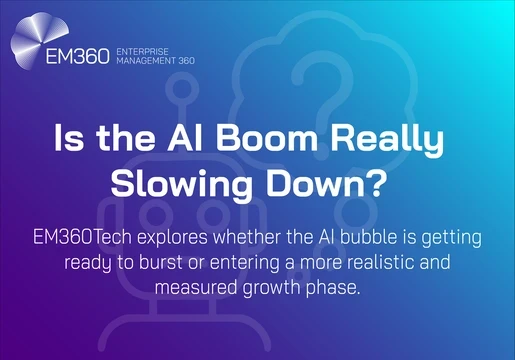Article contributed by Prashant Pandey, Head of Engineering at Asana
The era of AI has arrived, offering unprecedented opportunities for enhanced productivity, faster decision-making, and competitive advantage. AI has huge potential to automate mundane tasks and free up employees for higher-value work. Yet as organisations compete in the so-called "AI arms race," leaders need a playbook around how to deploy AI across their organisations.
Across the globe, we are rapidly integrating AI technology into the workplace, with data from Asana's Work Innovation Lab revealing that 36% of employees in the US and UK now harness AI at least weekly for tasks such as data analysis, admin, and even creative brainstorms. But when only 24% of employees say they’ve received any sort of guidelines on its use, it is clear that something is missing. To get their teams onboard and squeeze the most from AI, organisations must strike a balance between human skills and AI capabilities, providing guidance around best practices as well as transparency into its usage.
Harnessing AI’s potential is more than a technological challenge; it’s a strategic priority for businesses of all sizes. Leaders must assuage concerns, unite teams around a shared vision, and ensure the right guiding principles are in place for AI and teams to flourish together. Here’s how to get started.

1. Separate pilots and sanctioned use-cases
AI’s use cases in the workplace are versatile and expanding rapidly. Workers are increasingly turning to AI to streamline tasks and reduce busywork, and there is demand for even more. 60% of employees want to democratise AI within their organisations so that it is accessible to all employees, highlighting the need for intuitive tools that cater to different use cases and technical proficiencies.
With this in mind, organisations must separate pilot experimentation from sanctioned use-cases in order to avoid employee confusion over when (and whether) AI tools should be used. This effort should come with explanation and guidance, as research shows that if employees are forced to use AI technology without understanding how it works or how it benefits them, they may resist it or merely pretend to use it.
2. Provide training and keep humans in mind
There is enormous potential for AI to help teams to work together more effectively, but efforts must be directed towards fostering the right workflows and partnerships between people and AI. In other words, achieving human-centred AI. Successful integration of AI enhances human abilities rather than replaces them. But when almost half (48%) of employees want more guidance from their employers on how to use AI - and 39% say that the lack of AI training impacts their decisions to join a company - it is clear that humans must be kept at the centre of implementation.
One key area where businesses can look to improve employee buy-in is through focusing on goals. According to the State of AI at Work report, more than half (55%) expect their companies to use AI for goal-setting, and 61% are confident that AI will help their companies reach objectives more effectively. AI should be used to support and celebrate people’s contributions, helping individuals and teams achieve their goals faster. Humans can set the destination and use AI as a tool to help them get there.
3. Create transparency around how AI is being used in the organisation
While some workers may embrace AI, they also need greater transparency from executive leaders around their AI plans and policies. With leadership guidance, employees are more likely to understand, adopt, and trust how AI could or should be used within companies. Yet our research shows there are concerning gaps here: 44% of executives say they’ve been transparent about how their organisation plans to use AI - but only 25% of individual contributors say the same. This must be addressed in order to implement AI effectively.
The speed of AI’s transformative nature must also be balanced with responsibility. Many workers report concern around AI being used unethically, and it is up to businesses to address this. Responsibility sits on the shoulders of leaders to create clear AI principles which are shared transparently within the business, allowing for an open dialogue with employees about the use of AI.
This also extends to third parties. Businesses should look to create standards around safety, privacy, and transparency for all vendors they are partnered with - and share these internally with workers. When almost two-thirds (59%) consider a company's transparency on its use of AI as a key factor when deciding whether or not to join the organisation, it is clear that trust is fundamental to navigating the AI revolution.
Looking ahead
AI’s ability to save time and improve efficiencies can radically improve the way we work. However, onboarding AI successfully requires more than a race towards technology adoption - it demands a carefully considered integration in line with guiding principles.
AI policies should be transparent and intentional - and guardrails balanced with an experimentation mindset. By putting AI principles at the heart of company efforts, with a focus on human-centricity, AI can unlock more productive and streamlined ways of working, in a way that feels comfortable to employees. The future of work isn't artificial, it's amplified - where humans and machines work together to unlock new possibilities.







Comments ( 0 )